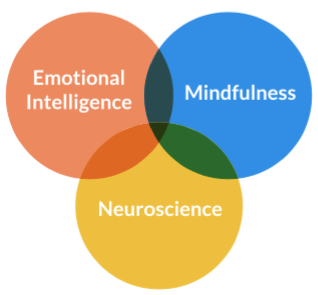Mindfulness

This refers to ancient mindfulness practices, informed by modern neuroscience and studies in emotional intelligence, distilled down to simple practices that are both meaningful and accessible to modern, busy urban people. Based on my decades of experience working with the principals, directors, managers and staff of companies, professional services firms and government agencies, these practices are further tailored to the particular client, for ease of learning and maximum usefulness.

HOW DOES ONE DEVELOP THE ABILITY TO BE MINDFUL?
Mindfulness is developed through practice. The most basic practice is meditation. As an athlete does strength and skills training, the goal of meditation is to train awareness – so that you can see how your mind is working in the present moment and actively choose both what you pay attention to and the manner in which you respond – rather than react. This practice produces equanimity. Equanimity produces an understanding of and compassion for others.
Mindfulness takes days, not years, to learn – beginning with 3 minutes of practice a day. It works for busy and nervous minds. Simple breathing exercises enable mindfulness by calming the nervous system to allow uncluttered, spacious awareness to arise – at will.
Physical yoga practices can be added to facilitate calming the nervous system, relieving tension in the body, building resilience to stress and developing an abiding sense of well-being.
WHAT IS EMOTIONAL INTELLIGENCE?
Emotional intelligence is the ability to monitor one’s own and others’ feelings and emotions, to discriminate among them and to use this information to guide one’s thinking and actions.


WHAT IS THE RELATION OF MINDFULNESS TO EMOTIONAL INTELLIGENCE?
Using the self-awareness cultivated by practicing mindfulness, you progressively develop the ability to shift from “I am my emotions” to “I experience my emotions” and to shift from reacting to thoughtfully responding to the emotions of others. Simple techniques are acquired in this training to enable this shift, which you can practice in your daily life.
WHAT HAS NEUROSCIENCE GOT TO DO WITH THIS?
The mind is fundamentally affected by the functioning of the various structures of the brain. By learning the simple basics of neuroscience, you gain an understanding of the structural source of emotions and how emotions can be beneficially processed and regulated.
This replaces the mystery of how your mind works with a practical and fascinating sense of the evolutionary development of the brain, which you can use to train your mind, to live more fully, with more joy, equanimity and satisfaction.
Learning the basics of neuroplasticity, you gain the confidence to be able to let go of habits that do not serve you and develop new habits that do.
